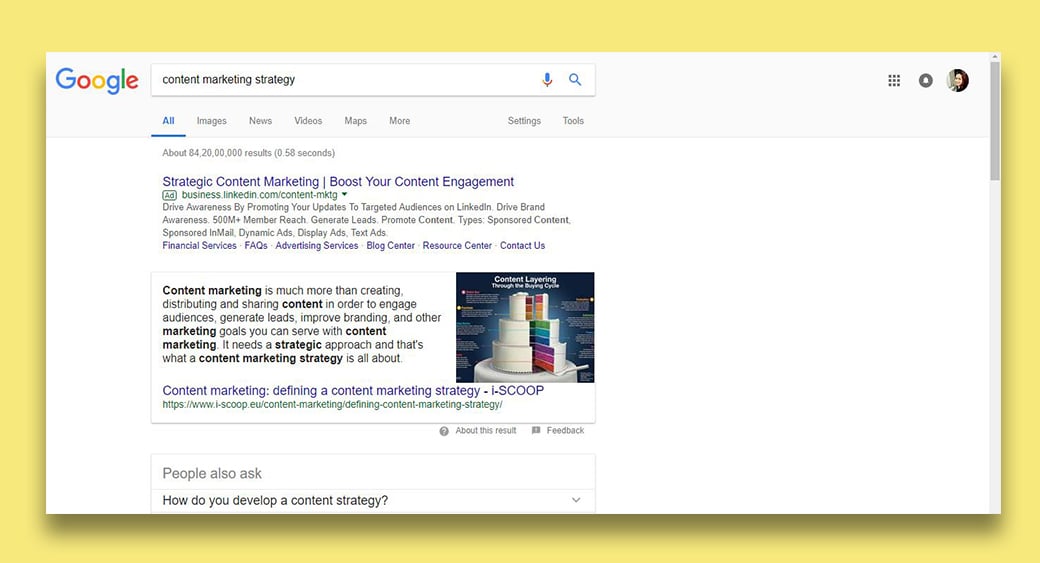SEO for Ecommerce Website – Homepage and Product SEO Strategies
Managing the SEO of an e-commerce website can be quite daunting. SEO for ecommerce website is far more difficult than doing SEO optimization for other kinds of websites because there are many pitfalls. Unlike other websites, even a small ecommerce website would have tons of pages (URLs) and complex site structure due to its very nature and along with many other factors; they make SEO a tedious task.

I’ve seen many e-commerce websites with poor performance on search engines due to the careless work of webmasters. So, I thought why not share ecommerce website SEO tips based on the common SEO pitfalls seen in ecommerce websites.
#1 Ensure Unique Meta Title Tags

The most common reason that pulls down the ranking of product pages on an e-commerce website is duplicate tags. Often, lazy webmasters add extremely similar meta titles to the related product pages which hurt their SEO for the best ecommerce sites. When search engines see two pages with similar meta titles on a website, they demote the ranking of both pages instead of showing both.
However, it makes sense if the meta title tags are similar on the different pages for the variations of a single product. For example, a t-shirt would be available in different variations based on the color or size. On most e-commerce websites, each product would have separate pages or URLs, but the content including the meta title should be the same across all variations. In such cases, you would have to use the canonical linking technique not to confuse search engines. Most e-commerce website platforms do this automatically for you. So, you don’t need to worry about that. However, you should ensure that the pages of product variations actually use canonical linking.
How to Identify Duplicate Meta Titles
There are many different SEO tools that will help you to identify duplicate meta title issues on a website. Most of the tools are highly useful when it comes to the SEO for ecommerce website, but they are very expensive.
Google Search Console
You can find if you have any duplicate meta title among the pages indexed in Google using Google Search Console.
On the left side of the dashboard, you can find HTML Improvements under the Search Appearance menu.
Dashboard > Search Appearance > HTML Improvements

When you click on the HTML Improvements submenu, you can see the suggestions of Google Search Console on the right side if it has found any issues with your HTML including meta title and meta description.
Screaming Frog SEO Spider
Screaming Frog is a robust tool to do an SEO of any website and it can be used to figure out duplicate title tags on an ecommerce website. Unfortunately, the free version crawls only 500 pages; so, you would have to purchase the paid version if you have more than 500 pages, which is the case for most e-commerce websites.
Solutions
- Avoid duplicate meta title
- Always try to give unique meta title for the different product pages.
- Utilize technique recommended by search engines to do a soft 301 redirect the URLs of product variation pages to a canonical URL.
Take Away
E-commerce websites are more likely to be prey for duplicate meta title issues. While it can cause serious damage to the website, it is not that difficult to fix them.
#2 Do 301 Redirects for Expired URLs – SEO for Ecommerce Website

If you have any dead URLs of removed pages on your website, you need to redirect the dead URLs to new pages.
It is quite common that e-commerce websites would remove certain products from their website after a period or change the URL for some reason. In such cases, the old URLs may still exist in Google’s database or other websites might have a link to that page.
When a page removed, search engines can’t find it while opening the URL and they will be served with a 404 page. It is the same with the users as well. If people click a link on a website that points to one of your product pages which is not currently available, they are served with a 404 page. It is not good for your website from both SEO and user experience perspectives. It is one of the most frustrating things when we do SEO for ecommerce website.
If you have any links pointing to deleted pages, you will not get any benefit of the inbound links to that URL. When search engines are served the 404-page several times when they open a URL, they will remove the URL from their index. It is not harmful to the website since the web page is already deleted. But the problem is it will send a signal to the search engines that your website is unreliable and it can affect your SEO.
Therefore, you should use a 301 redirect to send visitors and search engines from the deleted URLs to a new URL with similar content. Applying a 301 redirect will help you not to lose the traffic and pass the link equity from the old page to the new page.
You should remember that you need to redirect the URL to a page with similar content. Otherwise, the users and search engines will become confused which will affect you negatively.
How to Find out 404 Error Pages – SEO for Ecommerce Website
Google Search Console
Google Search Console provides 404 errors on your website based on the data in Google’s database. It helps you to identify if there are any broken or dead-links to your website from external websites. You can find the error in the Crawl Error section in the dashboard.
Dashboard > Crawl > Crawl Errors

Screaming Frog
Screaming Frog tool will allow you to find out the broken links on a website. Finding out the broken links on your website and fixing it is also essential to prevent future 404 errors.
Solutions
301 Redirects
You can find out the content on the removed pages using Google Cache or Way Back Machines like Archive.org. Then recreate a page with similar content and give it the dead URL.
You can also redirect the dead URL to a page on your website with similar content. However, you should never redirect a URL to a page with unrelated content because it will harm your ecommerce SEO.
#3 Boost SEO for Ecommerce Website with Lengthier Content on Product Pages

Many e-commerce websites don’t add much content on their product pages. They think that the product is awesome and users can understand the quality of the product by seeing the images. It might be true, but it is a bad practice in ecommerce SEO.
Google doesn’t like web pages with thin content. Therefore, when you do ecommerce product SEO, you need to have sufficient text content on your pages so that search engines can understand the page. Remember, users may be able to understand the product by looking at the product images, but search engines can’t.
Ideally, a minimum of 1000 word should be there on each page for which you want better ranked on Google. The description doesn’t have to be fancy. What is more important is it should help search engines to understand what the product is and help the users to figure out if the product meets their requirements.
You need to have crisp and clear descriptions of all your products. Never leave your website visitors to guess the details of the products.
Solutions for Thin Content Pages – SEO for Ecommerce Website
Add User Generated Content
It might be very difficult to add 1000 words content to every product pages if it is a large ecommerce website. It makes ecommerce product SEO very difficult. The best way to tackle it is adding user-generated content on the product pages. This is one of the best ecommerce SEO strategies effectively utilized by websites like Amazon.
Two ways you can add user-generated content on product pages are encouraging users to add reviews on the products or adding testimonials from the buyers.
#4 Implement Schema Markup to Show Rich Snippets on SERPs

Schema Markup can help you to add rich snippets to the search results from your website on Google SERPs. Although adding Schema Markup on the web pages doesn’t improve the ranking directly, it is considered one of the top ecommerce SEO strategies.
The Schema Markup can add price, rating, and photos of your products as rich snippets on the SERPs. It helps the web page to get more visibility in the SERP and it increases click-through rate. Since the click-through rate (CTR) is an important ranking factor in Google, a higher click-through rate due to the better visibility in SERPs will increase the ranking gradually.
Unlike other options on this list, implementing Schema Markup on your website can be a little trickier. You would have to add a markup code in your HTML document to tell the search engines what each piece of information on your web page actually means. Based on that information, search engines can add extra information along with the result in the SERPs.
If you are not a developer, you can seek the help of a developer or SEO expert. An e-commerce website development company in Chennai certifies that after they had assisted an e-commerce business in implementing Schema Markup on the website, they noticed a significant increase in the click-through rate and sales. After a couple of weeks, they also saw an improvement in the ranking which was a result of a higher click-through rate.
#5 Avoid Duplicate Content Issues Created by Faceted Navigation (Filters and Sorting Options)

The option on ecommerce websites to filter the products based on parameters like color and size and the option to sort products create unique ecommerce website SEO issues. Each combination of the use of filters and sort on a page creates unique URLs, and search engines would index them.
Issues
Keyword Cannibalization
When you have multiple URLs created due to the use filters, all these URLs would be optimized for the same keyword. So, the search engine can’t decide which among the URL to be shown in the SERP for the keyword because different URLs from your URLs on your website is competing with the same keyword. It is not good for you.
Wasting Crawl Budget
Apart from that, it will also cause search engines to index lots unwanted URLs from your website and waste your crawl budget.
Solutions
No-Indexing, Disallowing & Canonical Linking
Using the robot.txt to block the search engines from indexing URLs with certain parameters that are created by facet navigation (product filters) is an ecommerce website SEO solution. However, managing the infinite amount of these URLs created this way can be impossible most of the time.
AJAX
AJAX is probably the most effective solution to avoid URLs being generated and indexed on search engines due to the use of filters. It can eliminate common ecommerce website SEO problems like duplicate content, keyword cannibalization, and wastage of crawl budget.
AJAX can be used to filter the items on a page without creating new URLs. It helps to update the data on a web page using JavaScript without refreshing the page or without creating new URL.
Therefore, AJAX-powered faceted navigation (filters) is considered a great technique in SEO for ecommerce websites.
Unfortunately, there are a few limitations when it comes to using AJAX on web pages that already have regular faceted navigation. So, you should implement this ecommerce website SEO technique when you develop the website.
#6 Create a Proper Site Architecture – SEO for Ecommerce Website

For most of the ecommerce websites, the home page would be the only page that gets links from other websites. Therefore, the product pages and product category pages on an ecommerce website should be very close to the home page in the site architecture.
Issue
If an ecommerce website has a deep site structure and it takes more clicks to reach on a product page from the homepage, the link equity distributed from the homepage to the important product page is diluted. As the number of clicks increase, the link equity passed from the homepage is reduced.
Solution
So, when you do the SEO for ecommerce website, you should ensure that any product page should be accessible from the home page within 4 clicks maximum. It ensures no link juice is wasted.
In ecommerce websites, the categories and subcategories of the products determine the site architecture. So, when you create categories, make it simple and ensure it is easy to scale up as your ecommerce business grows. You should also ensure that your category and subcategory names contain keywords because it is one of the important ecommerce SEO strategies.
#7 Use Internal Linking to Boost Product Pages

Inbound links to your web pages from other websites is a strong ranking factor. Unfortunately, product pages may not be able to attract natural links from other websites, unlike blog posts. It is one of the major factors which make SEO for ecommerce website difficult.
The best way to overcome this is by using internal structure to pass the link equity across pages. What you can do is creating articles on your blog and get links for that. Then point a link from the article page to one of your product pages or product category pages which you want to boost. It is one of the ecommerce SEO strategies recommended by Brian Dean of Backlinko.
#8 Ensure Product Descriptions are Unique

Dealing with the duplicate content issues is a pain point while doing SEO for ecommerce website. Many webmasters use very similar content for different product pages. It may cause duplicate content issues, and the web pages will be penalized by search engines.
Some e-commerce websites use product descriptions from the manufacturers, and it is also equally harming as not having product descriptions. It will also be considered as duplicate content which search engines consider as a serious flaw.
So, always create unique and detailed product descriptions for your product pages to ensure better SEO for ecommerce website.
#9 Ensure Your URLs are Descriptive and Contain Keywords

Although search engines can manage any complex URL, they don’t love URLs with random strings that don’t give any clue about what the web page is about.
The URLs of your product pages need to be self-explanatory, so anyone can tell what the page is about by looking at the URL.
http://kidsestore.com/lkj/i?JEPL=u#wix23947qw
vs
https://www.kidsestore.com/best-sweater-teens
Compare the two URLs. The first one doesn’t give any clue about the content of the page while the second one does.
Having keywords like this in the URL is considered to be a ranking factor. So, you should create URLs with keywords for your product pages. Fortunately, most of the ecommerce platforms allow website admins to set up the URL structure which is very convenient for ecommerce SEO.
#10 Add Product Reviews and Rating on Product Pages

A study on local SEO ranking factors published by Moz in 2017 revealed that review signals were the fifth among the top ranking factors on Google. It showed that quantity, quality, diversity, and frequency of product reviews sent signals to Google and it affects ranking.
The reviews and rating you receive for your products or entire website inside and outside of your website can impact your ecommerce website’s ranking on search engines.
Apart from that, the keywords in the reviews shown on your product pages also can give a boosting for the product pages. So, you should consider adding reviews and rating while doing ecommerce product SEO.
The reviews and ratings of the products have a significant impact on the buying decision. When the website visitors don’t see any rating or review, they would smell something fishy. Therefore, it is better to show the reviews and rating even though they are not very positive because showing average reviews and rating is far better than leaving the visitors to suspect foul play for not showing any rating or review the product has received.
#11 Write Compelling Copy for the Product Pages

The compelling ad copy on product page should grab the attention of the visitors and persuade them to read more. It increased the site living time which is a factor search engines consider to measure the quality and relevance of a web page.
If you don’t have ad copy, visitors may bounce or return from your page immediately which will affect your ecommerce SEO. You need to highlight unique selling points of the products and use effective call-to-action that drives them to take actions.
#12 Use Breadcrumb Navigation

It is a proven fact that the breadcrumb navigation on e-commerce websites improves user-experience, and conversion rate while reducing cart abandonment rate.
Apart from that it also increases site living time and page per session and decreases bounce rate. These factors affect the ranking of an ecommerce website. So, breadcrumb navigation is very important when it comes to ecommerce website SEO.
Moreover, the breadcrumb navigation helps visitors to know where they are on the page in relation to the main page and whole structure of the page. When the users are deep down in the website structure, they can go up to any level of the website hierarchy easily using the breadcrumb navigation.
#13 Utilize Remarketing in PPC Campaigns

If you do PPC campaigns on Google AdWords or Facebook, you can make use of the remarketing feature to get better results. Many e-commerce websites certified that the conversion rate is very high during the remarketing campaign.
#14 Do A/B Testing to Figure out What Works and What Doesn’t

Designing your website or writing product copy based on pure guess would be deadly. You need accurate data to figure out what technique works and what doesn’t. The only way to get the data is A/B testing or split testing. Apart from that, you can also rely on case studies about the researches done by other e-commerce websites.
#15 Optimize Your Product Pages for Keywords with Good Search Demand

Consider the search volume and search intent of the keywords while choosing the keyword for your product pages and running SEO for ecommerce website.
You should measure the search volume of all related keywords and choose the best one for the page. For some products, users would use the manufacturer name or model number along with the product names.
#16 Choose the Right Keywords Balancing Search Volume and Competition

You need to choose keywords with decent search volume but with less competition. It is very unlikely small ecommerce can beat ecommerce giants when it comes to certain keywords. So, choosing the right keywords balancing the search volume and competition is an important step in ecommerce website SEO. Apart from that, you should also consider the search intent of the keywords. The transactional or commercial keywords are more likely to sell.
Summing up SEO for Ecommerce Website
We hope that this post was helpful and now you have a better understanding of SEO for ecommerce website. Optimize your product pages, pick the best keywords and don`t hesitate to share your results in the comment section below!




Leave a Reply